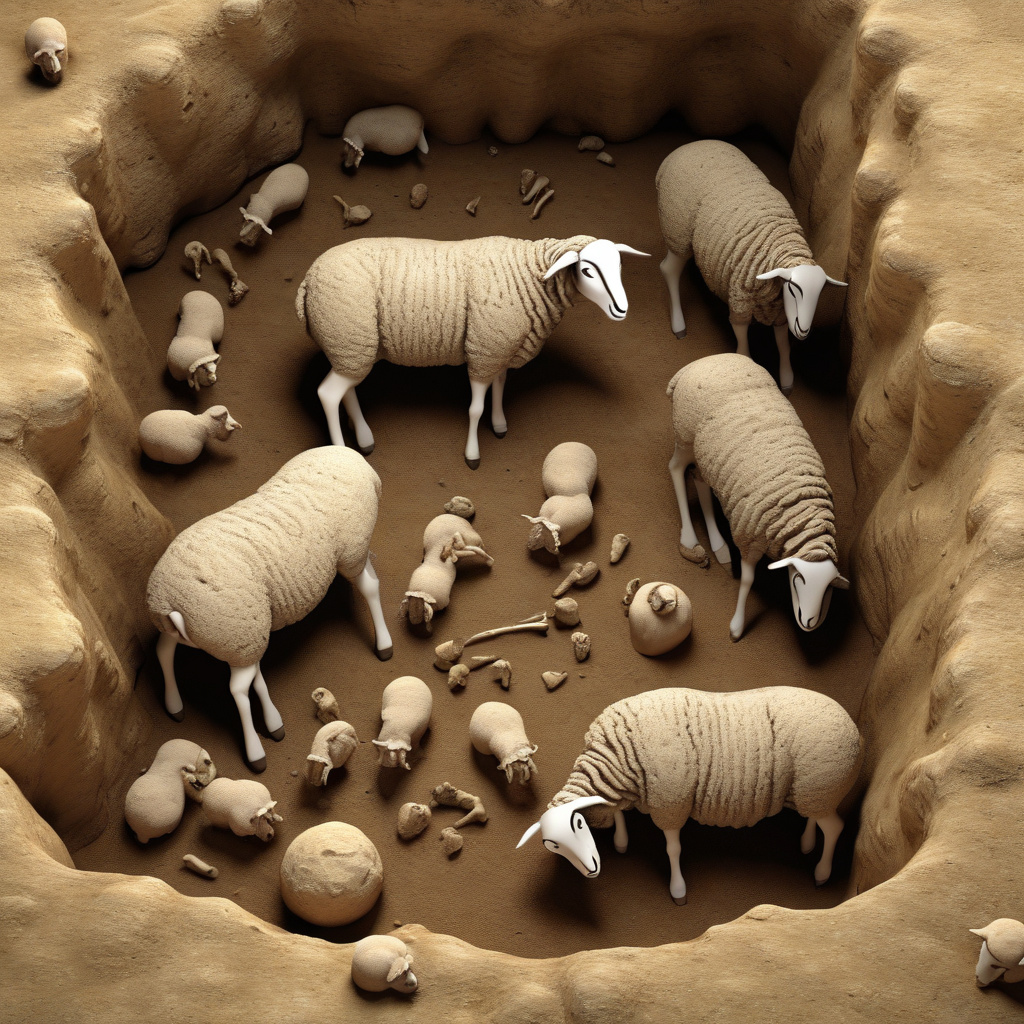4,000-Year-Old Sheep Offers First Evidence Linking Livestock to Bronze Age Plague
A new study has decoded a mysterious plague that swept across Eurasia thousands of years ago, shedding light on the connection between livestock and the Bronze Age pandemic. This groundbreaking research, led by an international team of scientists, has uncovered compelling evidence pointing to the role of ancient sheep in the transmission of infectious diseases to humans.
The study focused on the remains of a 4,000-year-old sheep found in Iran, a region known for its rich archaeological heritage. By analyzing ancient DNA extracted from the sheep’s bones, researchers were able to identify the presence of a pathogen closely related to the bacterium responsible for causing the bubonic plague. This discovery marks the first time that livestock has been directly implicated in the spread of a deadly epidemic during the Bronze Age.
The findings suggest that early pastoral communities may have unknowingly played a significant role in the emergence and dissemination of infectious diseases. As humans domesticated animals for food, labor, and other resources, they inadvertently created opportunities for pathogens to jump species barriers and infect new hosts. In the case of the Bronze Age plague, the close proximity between humans and livestock likely facilitated the transmission of the disease, leading to widespread outbreaks and population decline.
The implications of this research extend beyond ancient history, offering valuable insights into the dynamics of disease transmission between animals and humans. By studying the genetic material of ancient pathogens, scientists can better understand the evolutionary origins of infectious diseases and their impact on past societies. This knowledge is particularly relevant in the context of modern zoonotic diseases, which continue to pose significant threats to global public health.
Furthermore, the study highlights the interconnected nature of human-animal interactions and the importance of One Health approaches in disease prevention and control. By recognizing the link between livestock, wildlife, and human health, researchers and policymakers can develop more effective strategies for monitoring and mitigating the risk of emerging infectious diseases. This holistic approach emphasizes the need for collaboration across disciplines to address complex health challenges at the interface of animals, humans, and the environment.
In conclusion, the groundbreaking discovery of a 4,000-year-old sheep carrying evidence of a Bronze Age plague represents a major milestone in our understanding of ancient pandemics and their ties to livestock. By unraveling the genetic clues preserved in ancient remains, scientists have illuminated a critical chapter in human history, underscoring the enduring impact of infectious diseases on past civilizations. This research not only deepens our knowledge of the past but also provides valuable lessons for safeguarding global health in the face of ongoing health threats.
Bronze Age, Plague, Livestock, Infectious Diseases, One Health












